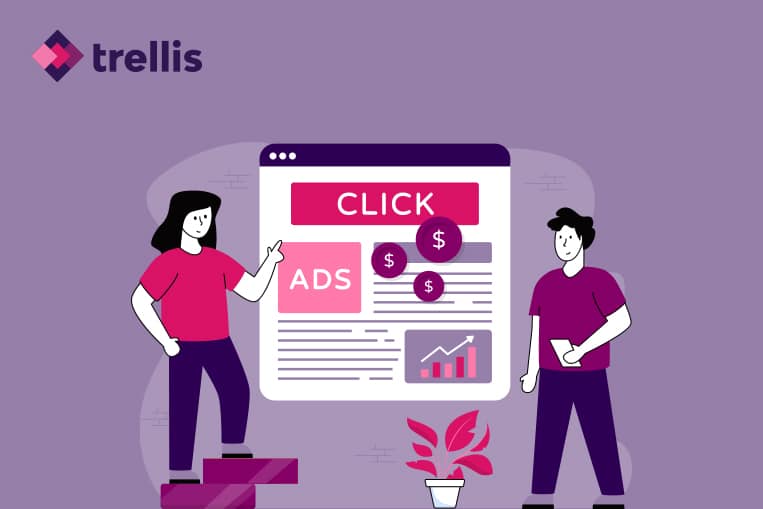Migration from the traditional PPC Google text ads to Google Shopping Ads is steadily shaping the paid marketing landscape. Over the past few years, Google Shopping Ads have positioned itself as a must-have ad format for eCommerce enterprises.
Launched in 2010, Google Shopping Ads appears either on Google Shopping, which was formerly Google Product Search, or at the top of search results when a prospective customer performs a regular search on Google. For brands looking to drive brand awareness and potentially outperform competitors, this platform presents quite the opportunity. Before you allocate your marketing budget towards Google Shopping Ads, here are benefits you should be looking forward to:
Benefits of Using Google Shopping Ads
Increased Visibility forYour Product
Google registers 3.5 billion searches every day. To take advantage of these numbers, you want to show instead of tell. Instead of simply describing the product, you want a tool that shows a prospect the actual product. But as you do this with ads, you want a solution that is not interruption-based but instead intent-based. Specifically, you want these users to be shown your ads when they are actively looking for a solution.
With Google Shopping Ads, your product appears above the organic search results. You will be leveraging Google’s algorithms process in which the search engine matches users with search results that best fit their search keywords. Whether you are just starting out or are already established, this is great brand visibility. Besides, these ads are intent-based. So you only get to interact with prospects who are ready to buy what you are selling.
Better Performance Across Different Metrics
ROI is king when it comes to marketing campaigns. This is no different for Google Shopping Ads. After you get the shopping campaign up and running, you need to keep tabs on its performance to ensure you get the results you want.
With Google Shopping Ads, you have a few key places to monitor the performance of the campaign. The first is the product groups page, where you can check on the impressions, maximum cost-per-click (max. CPC), clickthrough rate (CTR), conversion metrics, and click shares. You can customize this to include reports for days of the week, click-type, or devices.
With the products page, you should be able to keep tabs on the performance of the individual products within your campaign. At the predefined reports page, you get to have customized performance reporting at any level of granularity you desire.
Another option is the auction insights report that lets you compare the performance of your campaign with those of competitors. Finally, for more excellent monitoring of your campaign, you could set up a bid simulator that should bring greater clarity on what would affect your traffic and conversions. Going into the campaign, you should be expecting at least 26% higher conversion rates and 23% lower cost-per-click than traditional ads.
Better Quality Leads
Imagine a situation where you are generating lots of leads but just a few sales. Weak leads are simply a waste of business resources and time. As a business, you need to agree on the characteristics of a sales-ready lead and those that pass off as actually being “qualified.”
Right off the gate, Google Shopping Ads provide relevant product information. By the time a potential customer embarks on a Google search, they are looking for the extra push before they make the purchasing decision. This tool delivers on this need by providing visually revealing, information-rich ads that ensure that customers can see enough information before they arrive at your website.
This improves your chance of actually closing the sale since by the time they get on the site, they are not only adequately informed, but also they have had a view of what else is on offer. By the time they transition from the Google Ad to your website, you should anticipate a lead score that points to the lead being quite promising.
Easy Management
When working with text ads, you must first select and bid on the keywords that you intend to target. Google Shopping Ads essentially eliminates this. Google steps in and decides what keywords are most relevant based on the metadata of your product.
In retrospect, there is very little for you to do when it comes down to actually setting up your ad. When you get the Merchant Center account, you can pull product data right into Google through the app that connects your online store. This data will end up being correctly structured to include the image, ratings, and any other relevant information. What’s more, this feed with the product data will automatically update. This means that your ad remains accurate when it is on display on Google SERPs.
Overall, with Google Shopping Ads, all you really end up doing is sending your product data to Google. The platform will then utilize its algorithm to find matching keywords and essentially rank your product appropriately. The difference with traditional text ads is that you get to save up on a lot of time and effort.
Greater Reach
Google Shopping Ads is a powerful means for you to get your product in front of millions of potential customers. Note that on the platform, multiple products appear with a single query. This alone should boost the exposure that your product gets. Besides, Google will often end up showing your product even for related keywords. This expands the pool of prospects that you have access to.
A neat benefit of Google Shopping Ads is that you can reach customers at different stages of the buying process. This comes in handy as not all users that end up using Google are necessarily at the last stage of the buying process. Still, if Google finds that the search terms have a clear intention to go along with a sale, the platform will likely present your ad to the user.
Competition Benchmarking
Once you set up your campaign, Google Shopping allows you to benchmark its performance against those of your competitors. Competitive pricing benchmark data in Google Shopping Ads is an additional advantage to directing your marketing budget towards this platform.
Having the competition analysis in your arsenal means you have access to valuable data that you could then use to improve the ad campaign that you are currently running. Overall, what better way to know your real position than by comparing what you are doing with what the competitors have running?
eCommerce Tracking Through Google Analytics
To stay competitive within the eCommerce landscape, you’ve got to stay on top of the performance of this online endeavor. When you integrate your eCommerce with Shopping Ads, you are able to harness the benefits of Google Analytics. Specifically, it becomes possible for you to track product performance, shopping behavior, sales performance, and product list performance. All of this data comes in handy as you tweak your product, your eCommerce strategy, and the marketing strategies that you have employed.
Perfect Display on Mobile
User behavior is evolving. We are seeing more online traffic coming from mobile devices as compared to the other channels. As you choose a marketing platform for your eCommerce, you want a tool that is adaptable enough to this change.
With Google Shopping Ads, you have your advertisement displayed via a carousel with no less than 15 results. This is unlike text ads where only two can be seen. The former provides users with a better experience thanks to the intuitive display, which cannot be said for text ads.
Automation
As highlighted, the first step is setting up a Google merchant account. On the page, you will create the product feed, and the algorithm should then automate the ad.
This automation process involves updating the necessary product information directly from the product feed. This is made possible since the product feed interacts directly with your online store. When there is an update to the online store, your ad will feature the freshest information about the product.
Another aspect of automation within the platform is just how Google Shopping automatically matches relevant products to the keywords that most mirror the search queries. Overall, automation saves you time as you no longer need to create ad copies. Besides, it lowers the cost of labor as the entire campaign management is relatively easier. Whether your online store has a large inventory or you simply have few products, you can comfortably scale your advertising campaign with Google Shopping Ads.
Takeaway
There are many benefits that a paid advertising channel can bring to eCommerce. Google Shopping Ads has established itself as the platform to beat. It has quite the benefits that should see your business grow its eCommerce brand and increase the sales revenue.
With Google shopping automation, you get to take your marketing campaign a little further. You get to enjoy the ROI of having Google Shopping Ads as your platform of choice while saving on labor costs and time.
What’s more, at Trellis, we partner with you and apply proven strategies to ensure you get strong leads and thus increase your sales revenue. Schedule a free demo today and harness the full benefits of Google Shopping Ads.



